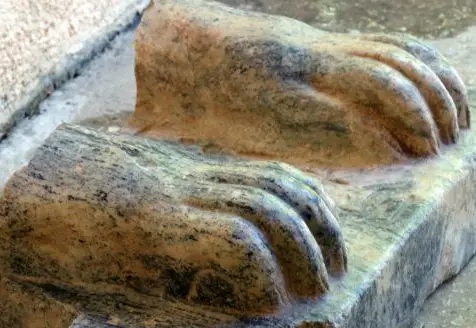Archaeological Discoveries: Ancient Egyptian Sphinx Uncovered in Northern Israel
(July 2013)
A fragment of a sphinx from Egypt with a hieroglyphic instruction mentioning the name of the Egyptian King Mycerinus was found at the excavations of Tel Hazor in northern Israel. King Mycerinus, who ruled Egypt about 3,400 years ago, and was one of the builders of the Giza Pyramids.
 |
According to Dr. Daphna Ben-Tor, curator of Egyptian culture at the Israel Museum, "Nowhere else in the Levant has a royal, monumental Egyptian statue of this size been found. It is also the only surviving sphinx of King Mycerinus - none have been found even in Egypt."
The fragment, made of granite, is 30 to 40 centimeters high, and weighs about 40 kilograms. It is believed that the original complete statue weighed about 500 kilograms. The fragment was discovered near the palace storerooms in destruction layer of Hazor dating to the 13th century BCE.
The king’s name appears between the two front legs of the statue, which were carved in the form of human hands, along with descriptions of him as "beloved by the divine manifestation ... that gave him eternal life." The inscription reveals that the sphinx was originally located in the city of Heliopolis, north of today’s Cairo.
The broken statue was found thrown into a pit. Ben-Tor explains, "I believe it was smashed during a conquest of the city. After all, that’s what’s done during a conquest. Not only in our time do people destroy the symbols of the government that has fallen and smash their statues, like in Iraq after the fall of Saddam Hussein or in Romania after Ceausescu."
Sources: Haaretz (July 10, 2013)


